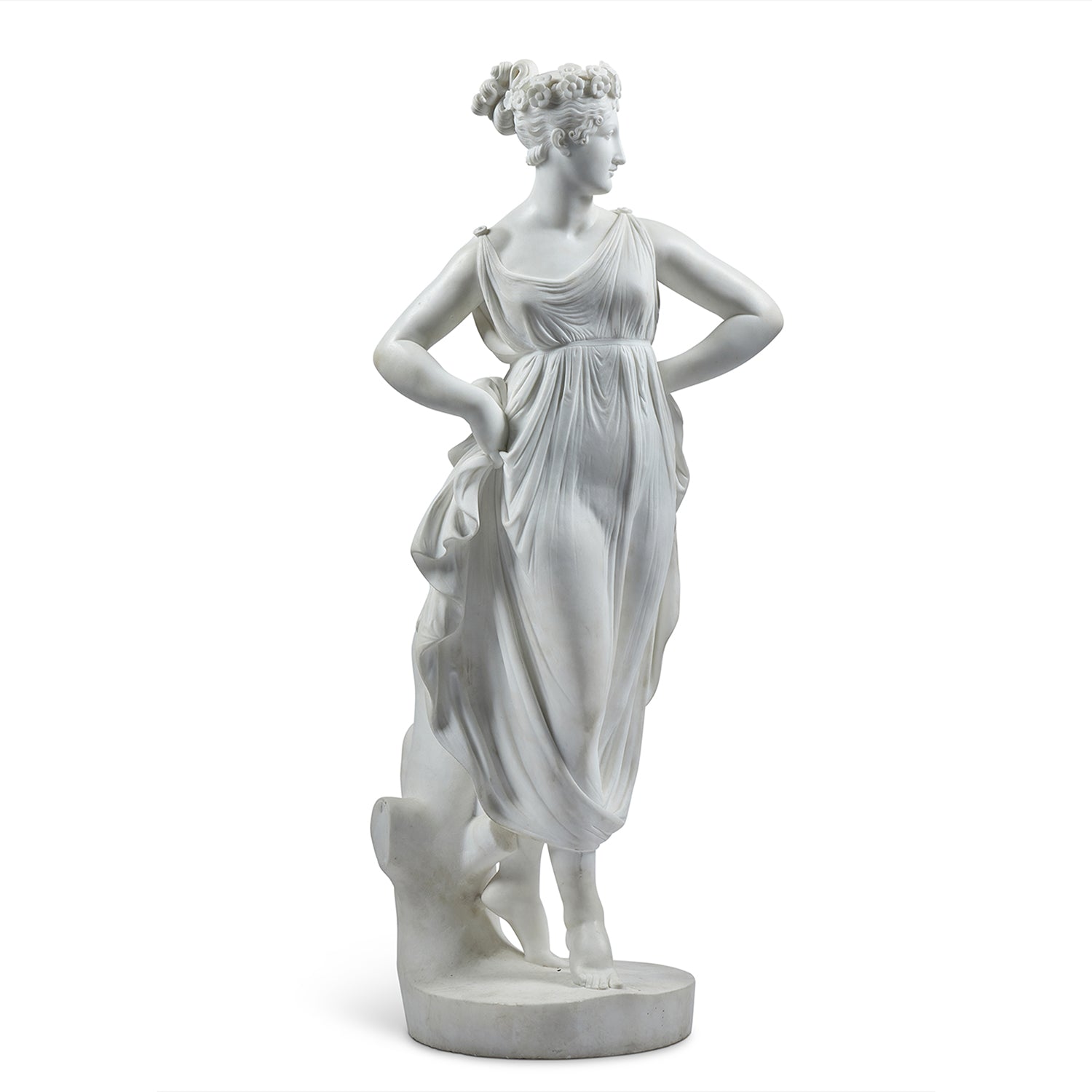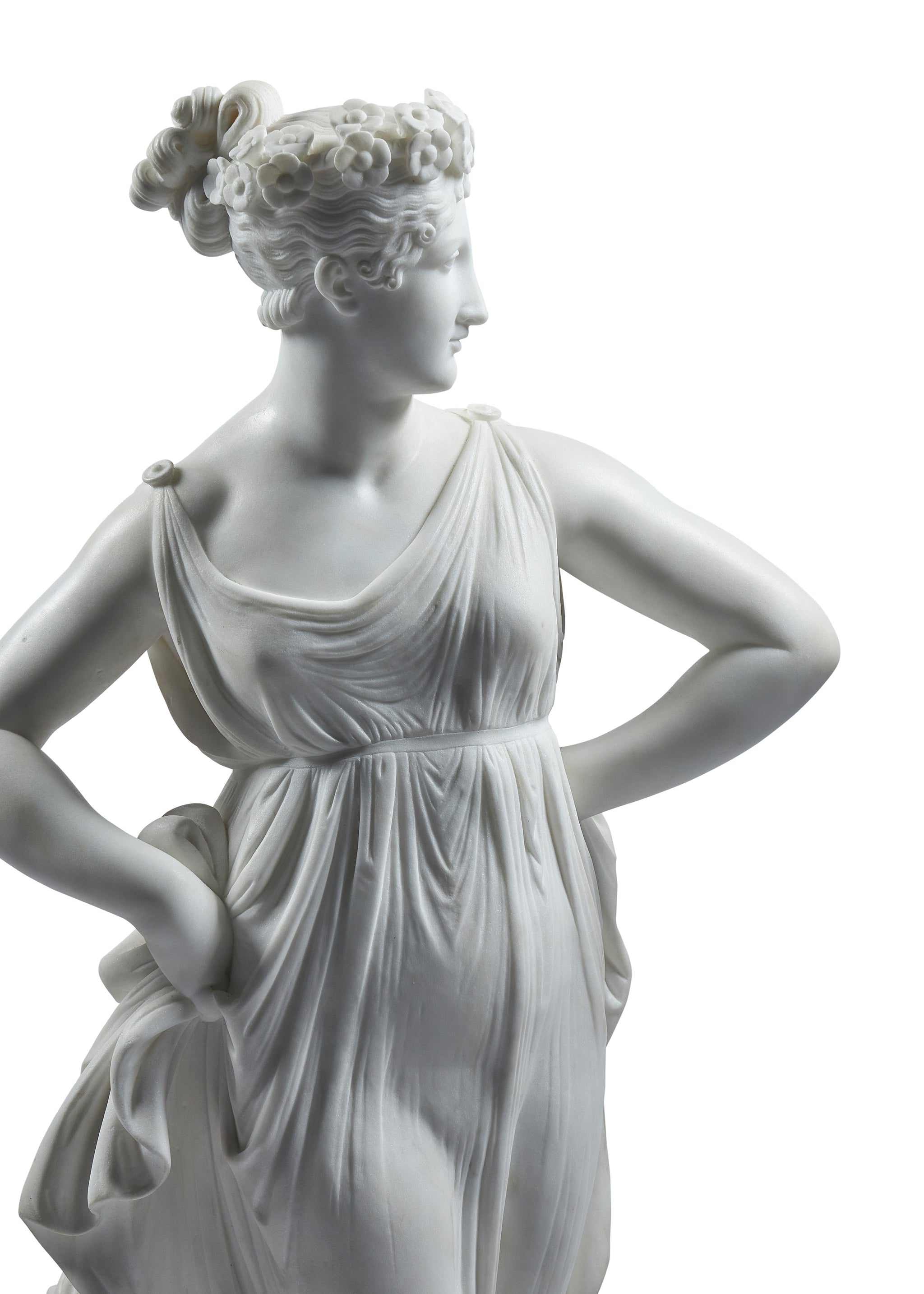Statuary Marble Sculpture of Dancer After Antonio Canova
SOLD
A STATUARY MARBLE SCULPTURE OF’DANCER WITH HANDS ON HIPS’AFTER ANTONIO CANOVA
Rome. 19th century
Height 42” (107 cm) width 18” (46cm) Base 13” (33cm) deep by 12” (30cm) wide
This finely carved Carrara marble sculpture reflects Canova’s lifelong fascination for the sculptural effects of a figure in movement and in particular the subject of Dance. He created three sculptures of dancers in various poses of which this example was the most successful. The first life-size version of the latter was created for Empress Josephine, wife of Napoleon Bonaparte, during 1811-1812. This first version was also exhibited at the Paris Salon of 1812 and now resides in the Hermitage. A second life-size version circa 1818 is in the collection of the National Museum of Canada where it figures prominently in the 18th and 19thc European Galleries.
Dance was a favourite theme of Canovas. He was fascinated by the sculptural effects of movement and many of his works deal with the subject of Dance. He created three sculptures in various poses, the present sculpture being considered to be his most successful. He titled it ‘Erato, Muse of the dance of love’ in correspondence.
Holding the edge of her long dress the young woman moves slowly into the dance. The sense of rhythmic movement is so well expressed in the light turn of the torso, in the steps, the placing of the hands and the turn of the head, that the viewer immediately recognises her as a dancer. Yet the strict, light line of the silhouette creates a sense of classical balance which is evidence of the sculptor’s loyalty to the ideal of Classical Antiquity.
Collections: Archive
Share:



